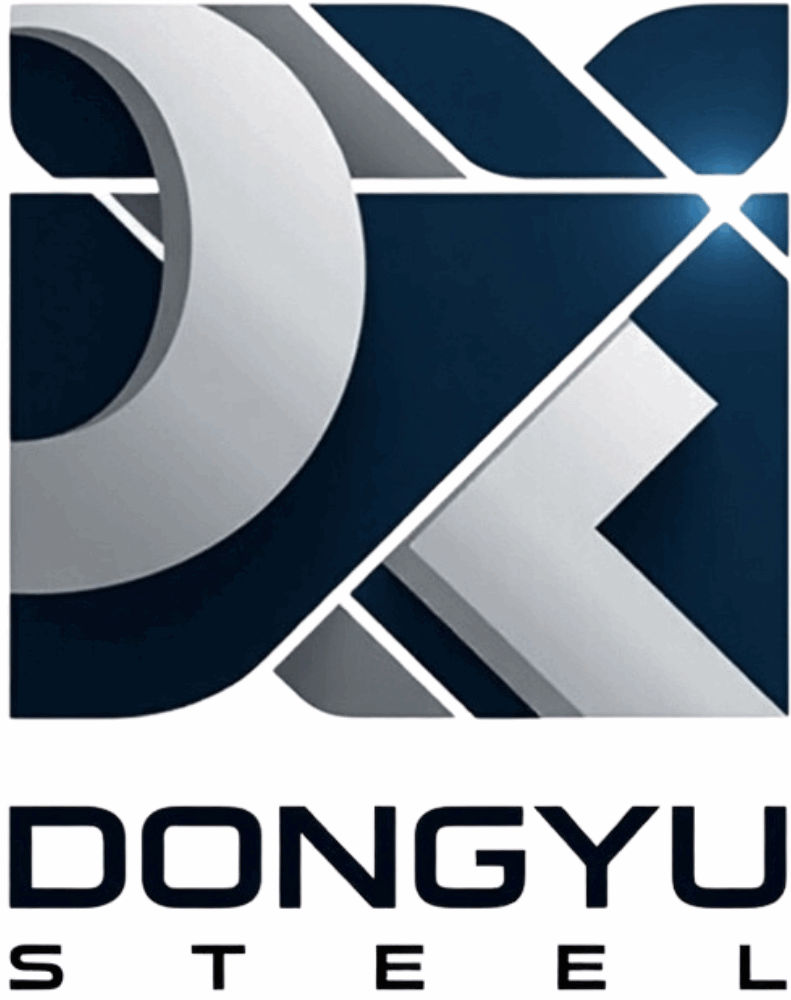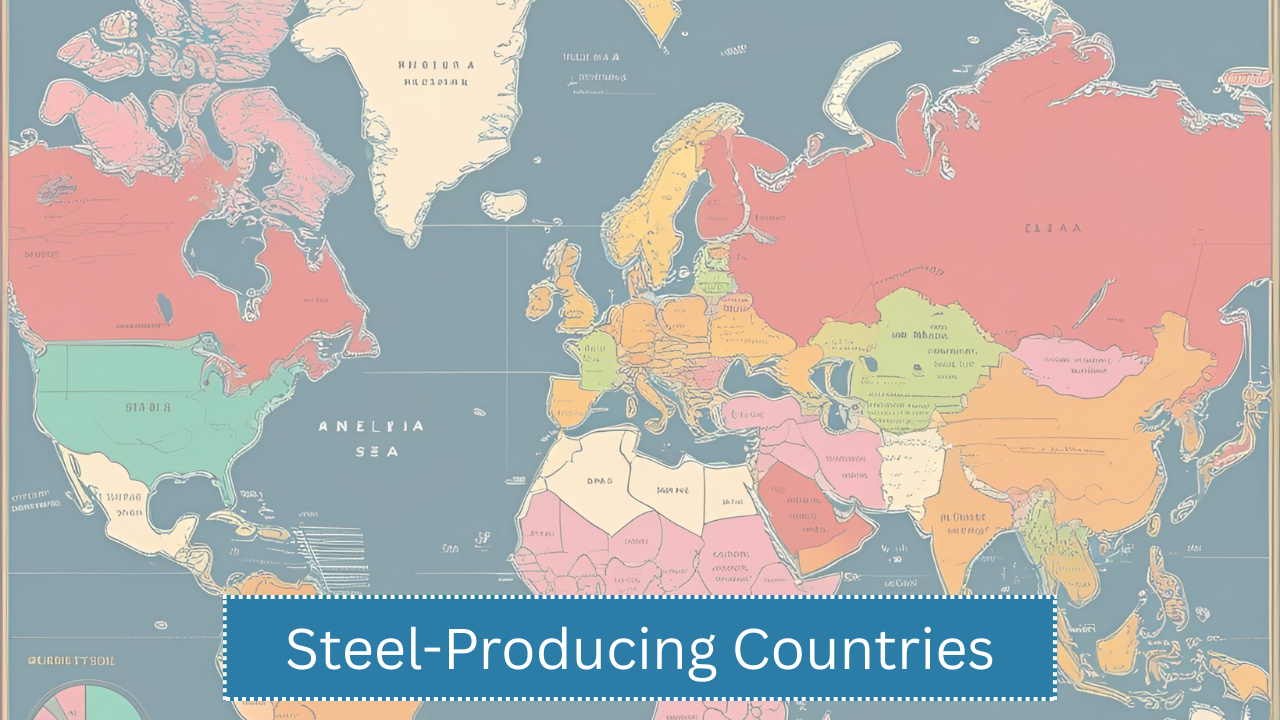Steel plays a vital role in modern development. From buildings and bridges to cars and tools, steel is used everywhere. Some countries have advanced industries that produce large amounts of steel every year. These nations not only supply their domestic needs but also export steel around the world.
This article gives a detailed look at the top 10 steel-producing countries based on recent data. The production is measured in million metric tons (MMT), showing how much raw steel these countries generate annually. Along with steel production data, this article also includes key highlights, challenges, and contributions of each country to the global steel industry.
Global Steel Production Overview (Top 10 Countries)
| Rank | Country | 2024 Steel Production (MMT) | Global Share (%) |
|---|---|---|---|
| 1 | China | 1018.0 | 53.0% |
| 2 | India | 137.5 | 7.2% |
| 3 | Japan | 87.3 | 4.5% |
| 4 | United States | 80.7 | 4.2% |
| 5 | Russia | 76.0 | 3.9% |
| 6 | South Korea | 66.9 | 3.5% |
| 7 | Germany | 42.5 | 2.2% |
| 8 | Turkey | 38.9 | 2.0% |
| 9 | Brazil | 34.1 | 1.8% |
| 10 | Iran | 31.7 | 1.6% |
1. China
- Steel Production: Over 1,000 MMT yearly.
- Key Features:
- Largest steel producer in the world.
- Hosts several major steel companies like Baowu Steel and HBIS Group.
- Strong domestic demand due to infrastructure and construction projects.
- Challenges:
- Faces pressure to reduce carbon emissions.
- Oversupply issues affect global prices.
2. India
- Steel Production: Around 137.5 MMT.
- Key Features:
- Fastest-growing steel industry globally.
- Government support through National Steel Policy.
- Home to major producers like Tata Steel and JSW Steel.
- Challenges:
- Needs to improve raw material availability.
- Logistics and energy costs are high.
3. Japan
- Steel Production: About 87.3 MMT.
- Key Features:
- Advanced technologies in steelmaking.
- Major exporters of high-grade steel.
- Top producers include Nippon Steel and JFE Holdings.
- Challenges:
- Shrinking domestic demand.
- Aging workforce and rising costs.
4. United States
- Steel Production: Nearly 80.7 MMT.
- Key Features:
- Leading producer of electric arc furnace (EAF) steel.
- Strong automotive and construction sectors.
- Key companies include Nucor, U.S. Steel, and Steel Dynamics.
- Challenges:
- Faces import competition.
- High energy and labor costs.
5. Russia
- Steel Production: About 76.0 MMT.
- Key Features:
- Rich in iron ore and coal resources.
- Major exporters to Asian and Middle Eastern markets.
- Top firms include Severstal and NLMK.
- Challenges:
- Sanctions and geopolitical issues.
- Restricted access to foreign markets.
6. South Korea
- Steel Production: Nearly 66.9 MMT.
- Key Features:
- Known for efficient and high-quality production.
- Strong steel exports, especially to Southeast Asia.
- POSCO is one of the top global steelmakers.
- Challenges:
- Relies heavily on imported raw materials.
- Increasing environmental regulations.
7. Germany
- Steel Production: Around 42.5 MMT.
- Key Features:
- Largest steel producer in Europe.
- Supplies mainly to automotive and machinery sectors.
- Key producers include Thyssenkrupp and Salzgitter.
- Challenges:
- Energy transition affects production.
- High labor and regulatory costs.
8. Turkey
- Steel Production: About 38.9 MMT.
- Key Features:
- Strong in long steel products like rebar and wire rods.
- Mostly based on electric arc furnace (EAF) production.
- Growing exports to Europe and North Africa.
- Challenges:
- Currency fluctuations impact imports and exports.
- Economic instability affects demand.
9. Brazil
- Steel Production: Close to 34.1 MMT.
- Key Features:
- Abundant natural resources like iron ore.
- Well-established export markets, especially in Latin America.
- Major players include Gerdau and Usiminas.
- Challenges:
- Infrastructure bottlenecks.
- Political and economic uncertainties.
10. Iran
- Steel Production: Around 31.7 MMT.
- Key Features:
- Rapid growth in the last decade.
- Focus on becoming self-sufficient in steel production.
- Key companies include Mobarakeh Steel Company.
- Challenges:
- International sanctions affect exports.
- Technology and equipment limitations.
Key Players in Steel Production by Country
| Country | Major Companies | Production Method |
|---|---|---|
| China | Baowu, HBIS, Ansteel | Blast furnace (BOF) |
| India | Tata Steel, JSW Steel | Blast furnace and EAF |
| Japan | Nippon Steel, JFE | BOF |
| United States | Nucor, U.S. Steel, Steel Dynamics | Mostly EAF |
| Russia | Severstal, NLMK, MMK | BOF |
| South Korea | POSCO, Hyundai Steel | BOF and EAF |
| Germany | Thyssenkrupp, Salzgitter | BOF |
| Turkey | Içdaş, Habas, Erdemir | Mostly EAF |
| Brazil | Gerdau, Usiminas | BOF and EAF |
| Iran | Mobarakeh, Khouzestan, Esfahan Steel | Mostly EAF |
Steel Production Trends and Outlook
- Decarbonization Push: Many countries are investing in low-carbon technologies like hydrogen-based steelmaking.
- Electric Arc Furnace (EAF): This cleaner method is gaining popularity, especially in countries like the U.S. and Turkey.
- Global Demand: Infrastructure and housing projects continue to drive demand, especially in developing economies.
- Raw Material Dependence: Countries with strong access to iron ore and coal have a cost advantage in steelmaking.
Final Thoughts
Steel remains a foundation for industrial growth and national development. Countries like China and India lead the world in production, while others such as Japan and Germany contribute through high-quality and technologically advanced processes. Each nation brings unique strengths and challenges to the global steel industry. With evolving technologies and increasing focus on sustainability, the steel sector is expected to undergo major transformations in the coming years.
Understanding which countries lead in steel production helps in analyzing global trade, infrastructure growth, and energy strategies. Future success in steel will depend on cleaner production methods, innovation, and strategic investment.

